Project Details
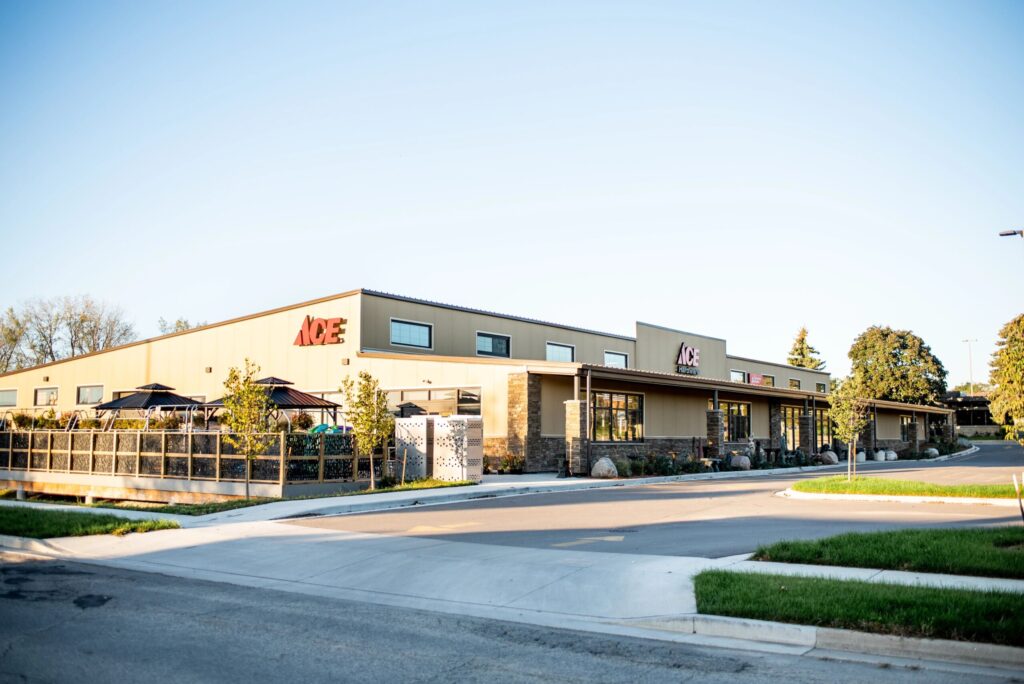
Bane-Nelson, Inc. is a family-owned and operated, third generation construction company based in Kenosha, Wisconsin’s fourth largest city. Kenosha sits on the west bank of Lake Michigan, about halfway between Chicago and Milwaukee. The Bane-Nelson family’s business history can be traced back more than a century. Since becoming a Butler Builder® in 1974, they have completed dozens of successful projects advising clients and erecting Butler pre-engineered metal buildings.
So, why has it been 20 years since a new metal building was constructed in Kenosha?
As with many stories we have heard over the years, this project’s biggest challenge (and its greatest success) might have been overcoming preconceived notions about metal buildings.
It was around 2010 when aerospace engineer Gary Dickes decided the time was right for a career change. His passion to own a business drove him to set up a hardware store in a strip mall location. That’s when he got to know Brian Nelson, Director – Construction Services/Operations at Bane-Nelson. Gary hired the local construction company to do the buildout work in that store partly because he recognized the Bane-Nelson name from some of the projects he ran in his previous career.
There were some odd situations in that first project, and Brian’s team was able to advise and work with Gary to produce a positive outcome. So, when Gary decided it was time to move from the strip mall to a stand-alone building, he did not hesitate to contact Bane-Nelson. “I did not even bid on the project,” Gary said. “I had used Bane-Nelson before and was comfortable with them. From there, we selected an architect I had used in my corporate life.”
That architecture firm was Partners in Design Architects, also based in Kenosha. The firm previously worked with Bane-Nelson, but not on a Design/Build project in recent years. This project allowed the companies to re-establish a connection. Together, they could provide creative solutions and deliver the best building for Gary’s growing business.
“It was the perfect opportunity to work together. The Butler products offered a nice solution and allowed us to create an aesthetically pleasing design while saving the client some money.”
Eric Migrin, Partners in Design Architects Project Manager
Gary was about 10 years into his venture and knew he could do more if he had the space. Around that same time, Ace Hardware contacted him to ask if he wanted to pick up the local franchise. With that additional inspiration to expand, Gary set things in motion by purchasing a parcel of land. Then the planning began.
“Gary wanted to maximize the site,” Brian said. “Ace has a formula that shows how additional square feet of retail space equates to X amount of dollars in sales. So, he wanted to maximize the footprint of his store.”
Before Partners in Design Architects got involved, Gary looked at plans that called for a block building that included a flat roof, and Gary was not interested in a flat roof. “I came from a building with a flat roof. They all leak,” Gary said with a slightly pained chuckle. That is when Brian introduced the idea of a metal building, and Partners in Design Architects picked up on it. Gary could feel the momentum growing. But there was a dark cloud forming.
“The first thing that jumped out at me is that it seemed there was a lot of flexibility in the architecture with the steel building,” Gary said.
Like many cities around the country, Kenosha has requirements limiting the use of traditional metal framed building wall panels. This came in the form of an ordinance passed in the late 1990s. With their years of experience building in and around the city, Bane-Nelson had reason to be concerned. “We thought it might be a little bit of an uphill battle,” said Brian. Soon, that was confirmed. “There were requests from the city that the new building blend in with the neighborhood. Aesthetics was important,” Gary remembers.
Always interested in creating building designs with extra aesthetic appeal, Eric was up for the task. An early version of his design included a two-story bump out in the front and some roof overhangs that he confirmed Butler could accommodate. Unfortunately, some unexpected costs associated with stormwater management required those features to be cut from the design.
Through the process, the team knew it could be a challenge to convince the city to allow the Butler exterior metal wall panels. That is when Brian and his Butler Area Manager, J.T. Barber, took time to show Eric the various wall panel options available in the Butler product line. “Coming into the project, I thought the pre-engineered building might be inflexible in terms of the options for skinning the exterior,” Eric said. “I was impressed with the number of finish options available from Butler.”
After reviewing all the possibilities, they decided to propose the Butler TextureWall™ Panel Wall System with a stone wainscot along the base to the city for approval. The factory-insulated metal wall system has a durable stucco-like exterior appearance. The interior panel face is factory-finished in a way that was perfect for the retail space Gary envisioned. Eric was fully on board with this decision because the TextureWall panels created a genuinely nice aesthetic look while providing the high R-value needed to meet the code requirements in that part of Wisconsin.
Their preparation paid off. “We presented a sample to the city, and just said it was a textured wall panel. They said, ‘Yeah, this is great. We really like this,’” Brian explained. This approval was critical because it allowed the whole project to move forward with the Butler pre-engineered metal building rather than returning to a conventional construction approach.
Early plans had as much as 22,000 sq. ft. of interior space, but after some adjustments for city approvals, it came in just under 20,000. Then, the team was able to do even more to help Gary maximize his store. They looked at the space needed for the retail shelving and discovered he could fit in more by moving the steel columns. They settled on a non-standard column spacing of 33 feet so they would fall at the end of the aisles. “The Butler design team made it happen,” Brian said.
Another idea that helped to maximize the retail space was to stack the store’s office space using a mezzanine. “We were one of the first to use the Butler Express Mezz™ System,” Brian recalled. In addition to saving 200 sq. ft. of retail space, the Express Mezz System also saved budget. “We compared the price with conventional steel. The labor cost was half, and the materials were lower too,” Brian said. Then he applied that to the overall project. “We would not have been able to achieve this building with this result on his budget with a conventional-type building. It just would not have happened,” Brian said.
This point was not missed by Gary. While he noticed a lot of flexibility at the architecture stage, the efficiency of the factory-finished, pre-engineered construction was transformational.
“The steel shows up ready to bolt together,” Gary observed. “The roof and wall panels show up – pre-finished inside and out – ready to go up. This turned into a big deal because I didn’t have to bring in another contractor to finish the inside walls or to put an exterior finish on. It moves the project along…it just all shows up and goes together.”
In addition to the Butler products mentioned earlier, the project also used Widespan™ structural systems, Butlerib® II roof system, and the Skyliner Insulation System, which gave the interior space a clean, finished appearance free of unsightly blanket insulation drooping along the ceiling.
As the city’s hardware store, Gary understood the importance of using local contractors. In addition to the general contractor and architecture firm being from Kenosha, all but one subcontractor that worked on the project was local – and even they had a crew that lived in Kenosha. This added an element of efficiency to the project, but there was a bigger reason in Gary’s mind. “They’re my customers,” he explained. It just made sense to have them build the store, and he was very appreciative of the work they did.
In fact, one of the first messages Gary put on the electronic sign in front of his new building was a thank you to all the local contractors.
Thanks to them, the store has become a local landmark. That might sound bold for a building that’s only two years old, but that’s exactly what has happened to Prairie Side Ace Hardware. “It’s a building that everyone recognizes. And you can say something’s located ‘by the Ace Hardware’ and they’ll know what you’re talking about,” Brian explained.
Of course, it’s one thing to drive by Prairie Side Ace Hardware. It’s a totally unique experience when you step inside. With clear story windows in front and back, there’s a tremendous amount of natural light, making it an extremely comfortable space. “Customers comment on it all the time. The high ceilings and natural light are noticed instantly,” Gary said. It’s not what they expect from a retail space.
And just like that, the list grows…of the people whose preconceived notions were overcome by this metal building in Kenosha.
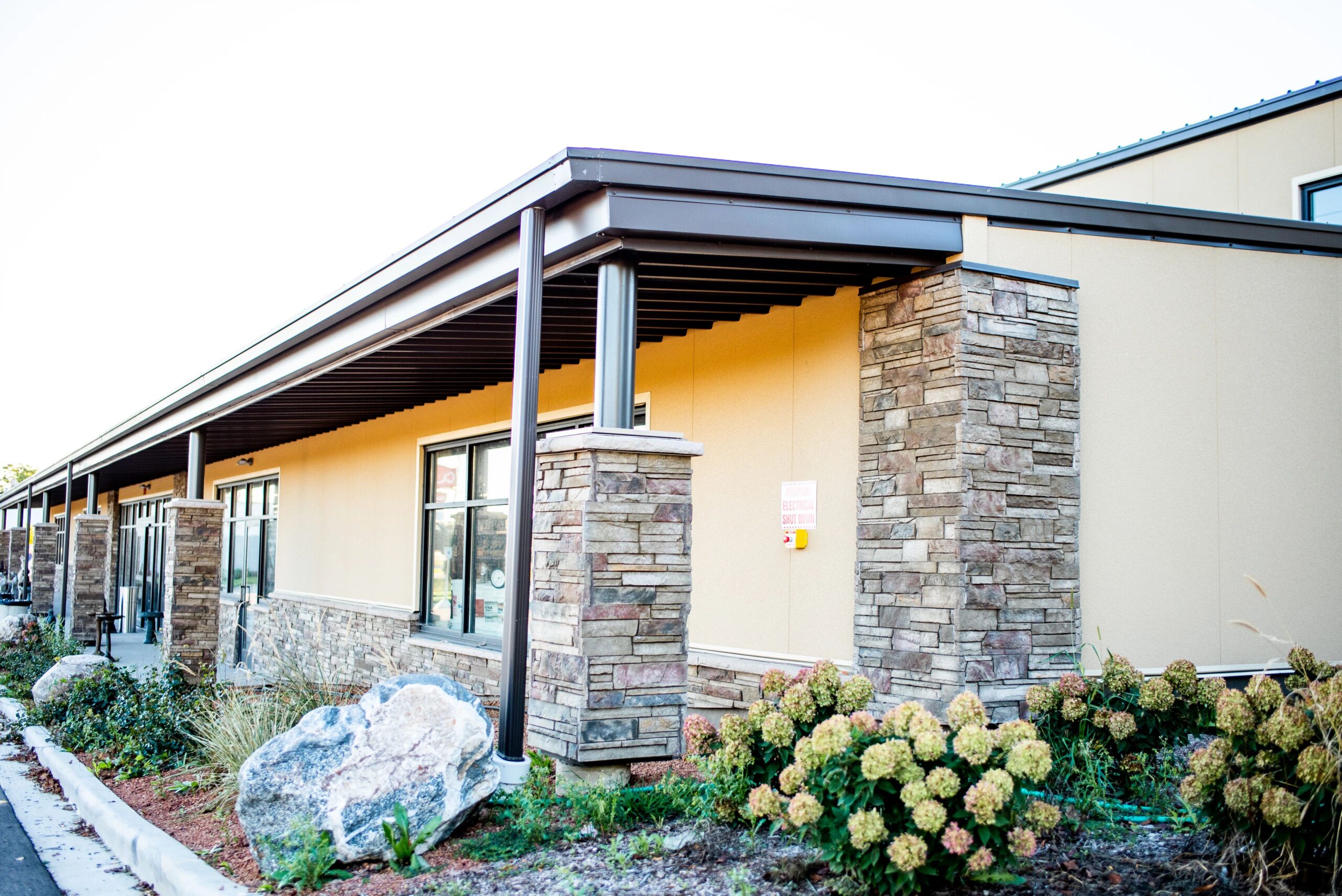
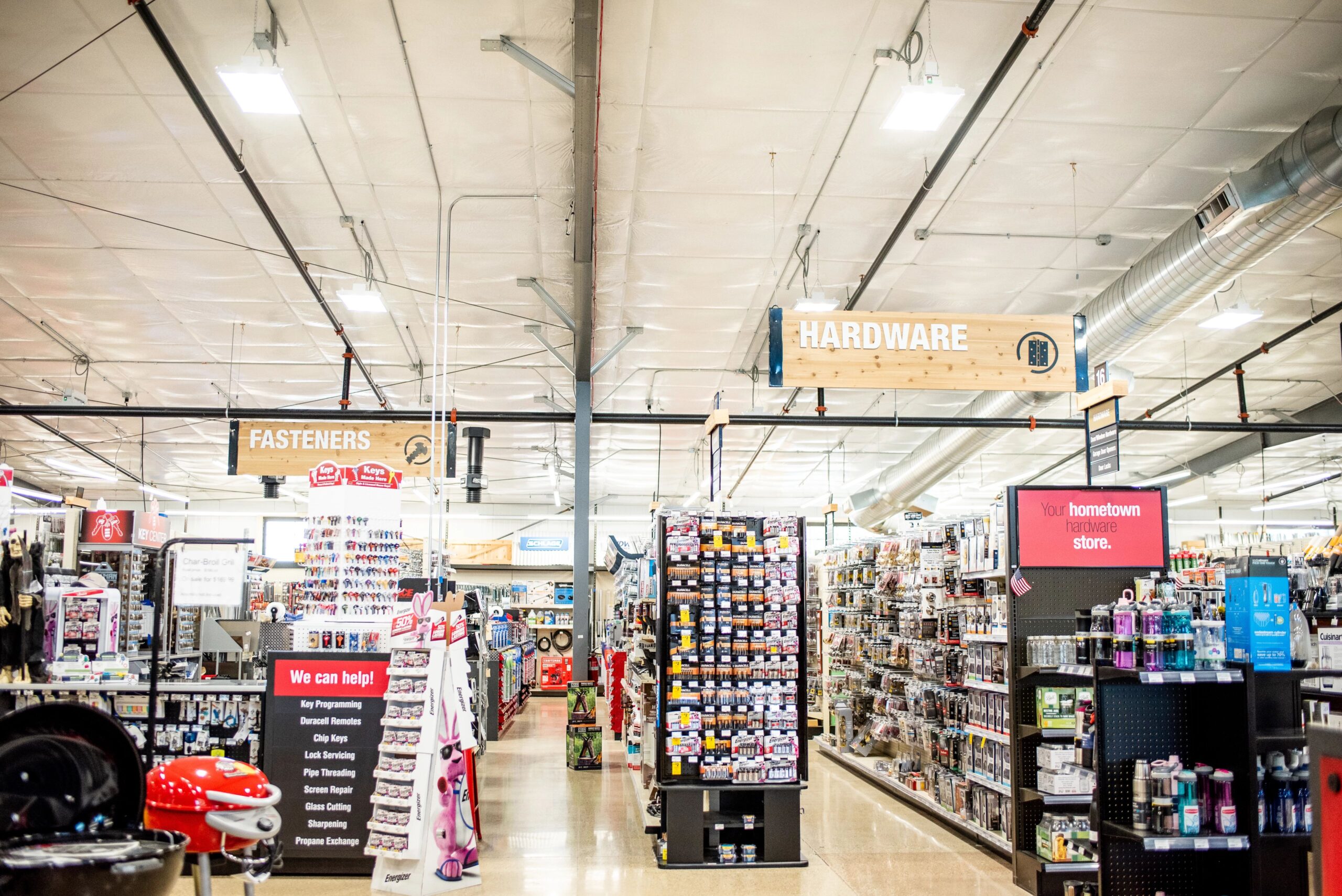
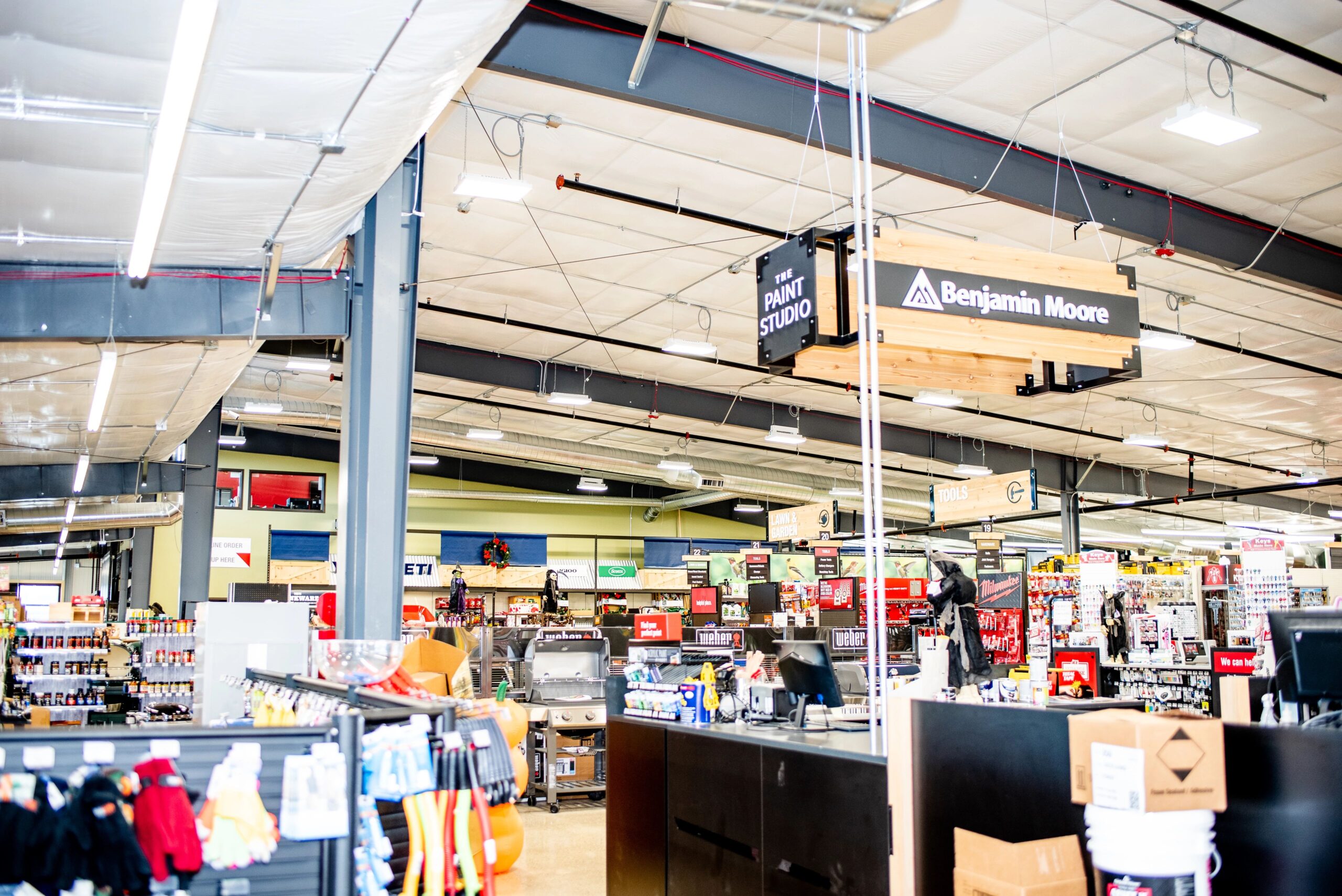
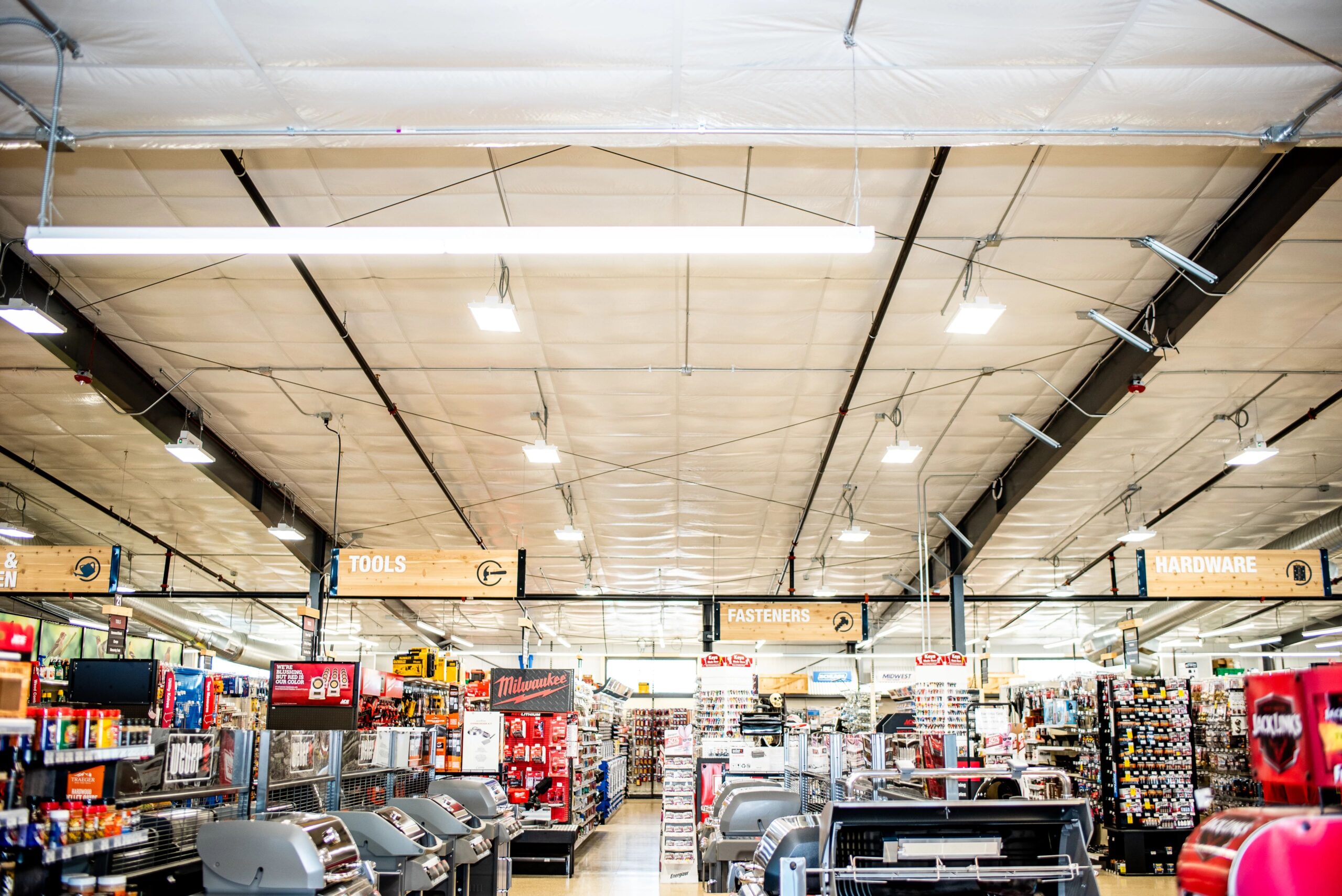
Connect with us for details about how we can solve your specific wall system needs.
© 2024 BlueScope Buildings North America, Inc. All rights reserved. Butler Manufacturing™ is a division of BlueScope Buildings North America, Inc.